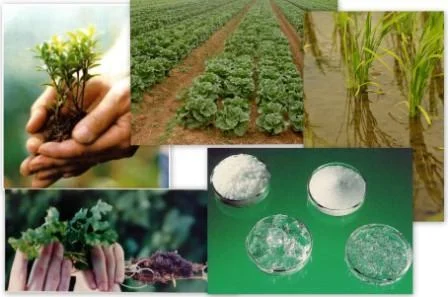The continuous advancement of agricultural science and technology has led to new trends and innovations in the research and development of agricultural superabsorbent polymer materials. These polymer materials offer significant support to agricultural production due to their exceptional water absorption and retention properties.

Advancements in New Polymer Materials
Recent years have seen ongoing exploration into the preparation processes and performance optimization of novel polymer materials. By introducing innovative synthetic methods, altering molecular structures, or incorporating functional groups, researchers have developed agricultural superabsorbent polymer materials with higher water absorption rates, improved water retention properties, and enhanced biocompatibility. These new materials not only ensure a consistent water supply for crops in arid regions but also effectively regulate soil moisture in wet areas, thereby enhancing crop yield and quality.
Development of Intelligent Polymer Materials
As smart agriculture continues to evolve, there is a growing demand for intelligent polymer materials with responsive, self-regulating, and controllable release properties. Researchers are striving to create intelligent agricultural superabsorbent polymer materials that can automatically adjust their water absorption and retention capabilities in response to environmental changes such as temperature, humidity, and light. This enables precise control of crop water requirements. Furthermore, intelligent polymer materials can be integrated with sensors and control systems to achieve intelligent management of agricultural production.
Focus on Environmentally Friendly Polymer Materials
While pursuing agricultural efficiency, environmental considerations have become paramount. Hence, the development of environmentally friendly agricultural superabsorbent polymer materials has become a key trend. These materials typically utilize natural polymer raw materials like starch and cellulose or biodegradable synthetic polymers to minimize environmental impact. Additionally, researchers are reducing the environmental footprint of water-absorbent polymers for agriculture by optimizing production processes and enhancing material efficiency during use.
Multi-functional Polymer Material Development
To meet the diverse needs of agricultural production, there is a notable focus on developing multifunctional agricultural superabsorbent polymer materials. These materials not only possess excellent water absorption and retention capabilities but also offer additional functionalities such as slow-release fertilizers, pesticide carriers, and soil improvement properties. Through integration with other agricultural technologies, multifunctional polymer materials can synergize multiple functions, thereby enhancing agricultural production efficiency and effectiveness.
In conclusion, research and development in agricultural superabsorbent polymers are witnessing new trends and innovations encompassing new materials, intelligent capabilities, environmental friendliness, and multifunctionality. The adoption of these advancements in water-absorbent polymers for agriculture will facilitate more efficient, environmentally sustainable, and intelligent solutions in agricultural production, thus fostering sustainable agricultural development.

